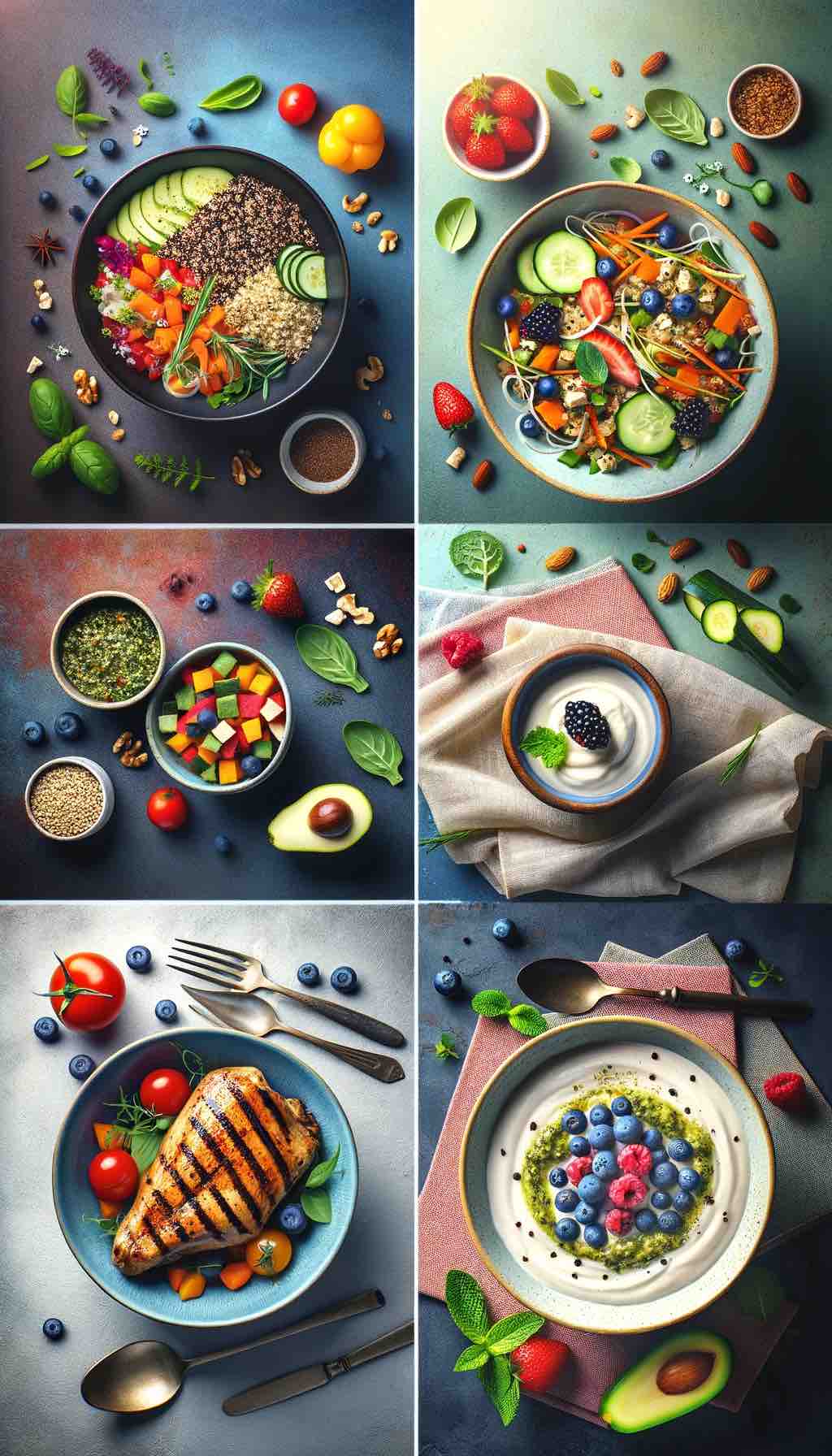
Introduction to Gestational Diabetes and Nutrition: Gestational diabetes, a common condition many women encounter during pregnancy, requires special attention to diet. The key is to maintain stable blood sugar levels while ensuring you and your growing baby receive the necessary nutrients. In this post, we’ll explore five scrumptious recipes that cater to these needs. Each dish is thoughtfully designed to be gestational diabetes-friendly, focusing on low-glycemic ingredients, balanced proteins, and healthy fats, all wrapped in delightful flavors that celebrate the essence of motherhood.
1. Quinoa and Veggie Stir-Fry: A Rainbow of Nutrients The Recipe: Start with a base of quinoa, a versatile and nutritious grain. In a large skillet, sauté a vibrant mix of vegetables like bell peppers for vitamin C, broccoli for folate, and carrots for beta-carotene. Add in the cooked quinoa, season with a dash of low-sodium soy sauce and garlic for a depth of flavor. This dish is as colorful as it is healthful. Why It’s Perfect: Quinoa is a low-glycemic, high-protein grain, excellent for blood sugar management. The variety of vegetables adds fiber and essential nutrients, making it a complete meal.
2. Grilled Chicken with Mediterranean Salad: Protein-Packed Delight The Recipe: Marinate chicken breasts in a mixture of lemon juice, olive oil, and herbs like oregano and thyme. Grill to perfection. Pair with a Mediterranean salad composed of mixed greens, ripe cherry tomatoes, crisp cucumbers, and a sprinkle of feta cheese. Dress the salad lightly with olive oil and balsamic vinegar. Why It’s Perfect: Chicken provides lean protein, crucial for stabilizing blood sugar. The salad is not just a refreshing side; it’s packed with antioxidants and healthy fats, important for both maternal and fetal health.
3. Hearty Lentil Soup: Comfort in a Bowl The Recipe: In a large pot, cook lentils with diced tomatoes, finely chopped onions, carrots, and celery in a low-sodium vegetable broth. Season with ground cumin and coriander for a warm, comforting flavor. Serve this hearty soup with a slice of whole-grain bread for added fiber. Why It’s Perfect: Lentils are a powerhouse of nutrition, high in fiber and protein but low in glycemic impact, making them ideal for managing blood sugar levels.
4. Nutty Berry Yogurt Parfait: A Sweet Balance The Recipe: Create layers of thick Greek yogurt, fresh mixed berries like strawberries, blueberries, and raspberries, and a sprinkle of nuts and seeds like almonds and chia seeds. If needed, add a drizzle of honey for natural sweetness. Why It’s Perfect: Greek yogurt provides a rich source of protein and calcium, while berries offer fiber and antioxidants without spiking blood sugar. Nuts and seeds contribute healthy fats and extra protein.
5. Zucchini Noodles with Pesto: A Light and Flavorful Twist The Recipe: Spiralize zucchini into noodle-like strands for a low-carb pasta alternative. Toss these noodles with a homemade pesto sauce made from fresh basil, garlic, pine nuts, Parmesan cheese, and olive oil. Why It’s Perfect: Zucchini noodles are an excellent way to enjoy a pasta-like dish without the blood sugar spike. The homemade pesto adds a burst of flavor along with healthy fats and nutrients.
Conclusion: Navigating gestational diabetes can be challenging, but it doesn’t mean sacrificing flavor and enjoyment in your meals. These recipes are designed to keep you and your baby healthy and satisfied, blending nutritional needs with culinary pleasure. Enjoy these gestational diabetes-friendly dishes and embrace the joy of eating well during your pregnancy journey.
We Want to Hear from You: Have you tried any gestational diabetes-friendly recipes that you love? Share your experiences, favorite dishes, or tips for managing this condition through diet. Your insights could provide valuable support and inspiration to other expectant mothers.
FAQs
- What diet changes should I consider for gestational diabetes? Focus on balanced meals with low-glycemic index foods, lean proteins, healthy fats, and fiber to manage blood sugar levels.
- Can I still enjoy sweets with gestational diabetes? Yes, in moderation. Opt for natural sweeteners like fruits and monitor portion sizes.
- How often should I eat to manage gestational diabetes? Eating small, frequent meals throughout the day can help maintain steady blood sugar levels.
- Are carbohydrates harmful if I have gestational diabetes? Not all carbohydrates are bad. Choose complex carbohydrates like whole grains, which have more fiber and digest slowly.
- Can gestational diabetes affect my baby? Uncontrolled gestational diabetes can lead to complications, but managing it through diet and lifestyle can reduce risks.
- Is it necessary to avoid fruit due to its sugar content? You don’t need to avoid fruit, but choose lower-glycemic options and be mindful of portions.
- Can I use artificial sweeteners? Some artificial sweeteners are considered safe during pregnancy, but it’s best to consult with your healthcare provider.
- What proteins are recommended for gestational diabetes? Lean proteins like chicken, fish, tofu, and beans are excellent choices.
- How can I ensure my meals are balanced? Include a source of protein, fiber, healthy fats, and complex carbohydrates in each meal.
- Can these recipes help post-birth if I had gestational diabetes? Yes, these recipes promote a healthy diet which is beneficial even post-pregnancy.
Blog Tags: Gestational Diabetes, Pregnancy Nutrition, Diabetes-Friendly Recipes, Healthy Eating During Pregnancy, Low-Glycemic Meals, Balanced Diet for Pregnancy, Maternal Health, Prenatal Care, Blood Sugar Management, Nutritious Pregnancy Meals










